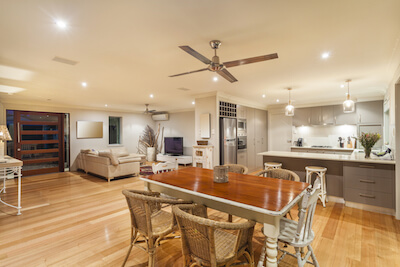What Hardwood Stains Well?
Looking for the right hardwood for your floors? It’s more than the stain you ultimately select. It comes down to the wood you choose.
The most popular wood choices are vastly different. They range in extremely soft to hard, with undertones in a full spectrum across the map. Not only does hardness affect how a wood will accept stain, but also the appearance of the natural color.
- Birch has pink undertones and is extremely soft.
- Pine has yellow undertones.
- Poplar has green undertones.
- White oak has the most neutral undertones.
- Red oak has red undertones.
Because hardwood starts out with certain colors already in place, the stain you use ultimately plays into the final appearance.
For example, if a stain starts with red undertones, it will play well into hardwood that has red undertones already in place. White and red oak will let the darker, red tones shine through, pine may have a lighter, yellow-reddish appearance.
It’s not just the type of hardwood that matters. It also depends on the grain. Tight grains won’t take the stain as well as other grains. And higher-quality wood will always perform better than cheaper, lower qualities. This is especially true if you will be installing hardwood and you have a desire to sand it and change the color more than once in the coming years.
- Oak has large pores and stains very well
- Ash accepts all hues of stain
- Chestnut takes stain well
- Pine is preferable with light stains only
- Birch and maple do not stain well
- Cherry – why would you stain it? It looks great without
- Dark woods are also often best left alone with just a finish to keep the natural look in place
In our experience, oak is one of the most versatile hardwoods you can work with. It stains evenly every time and looks good no matter what stain you ultimately choose.
Pine is one of the most difficult, and is a good choice if light, natural looks are your desire now and in the future.
How can we help you choose the right hardwood for your project?
